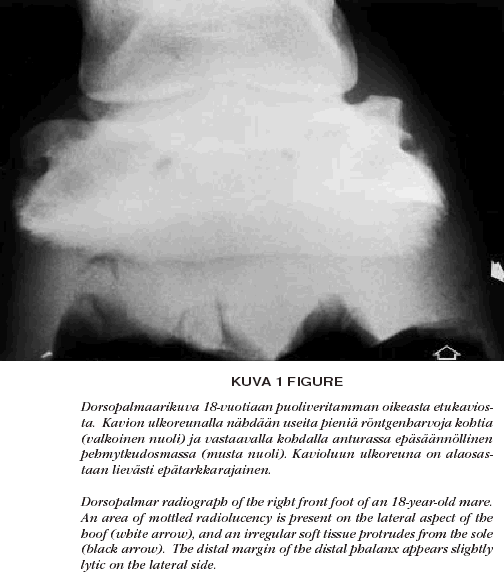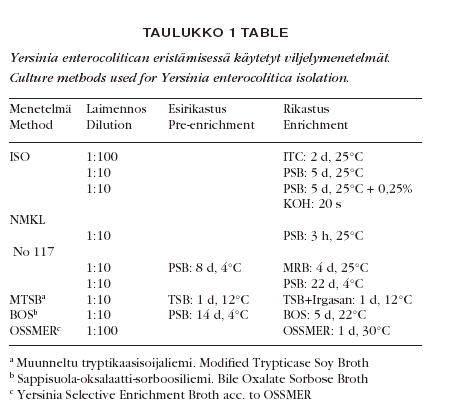
Five different culture methods for isolation of Yersinia enterocolitica strains belonging to serotypes O:3 and O:9 were evaluated. These serotypes were found from minced pork only after selective enrichment in irgasan ticarcillin chlorate (ITC) broth, which is a part of the ISO (International Organization for Standardization) method. The other enrichment broths studied were peptone sorbitol bile salts (PSB) broth, modifi ed Rappaport broth (MRB), bile oxalate sorbose (BOS) broth, modified trypticase soya broth (MTSB) and OSSMER broth. However, no yersinia was found using these enrichment broths. Cefsulodin irgasan novobiocin (CIN) plates were used for yersinia isolation because this agar was shown to be the best, compared to salmonella shigella deoxycholate calcium chloride (SSDC) and MacConkey agars. Selective enrichment in ITC broth and isolation on CIN plates was shown to be an useful method to recover Y. enterocolitica O:3 from minced pork.

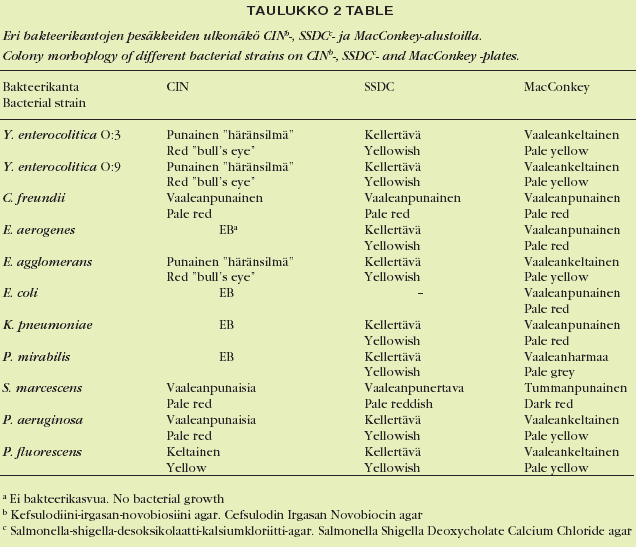
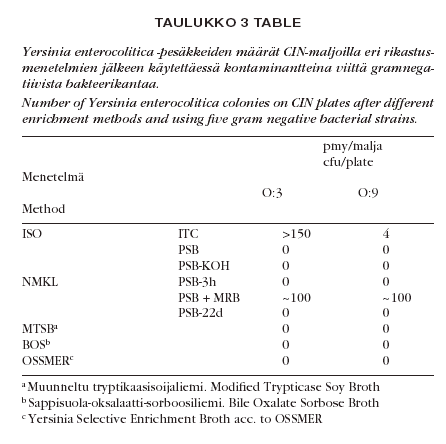
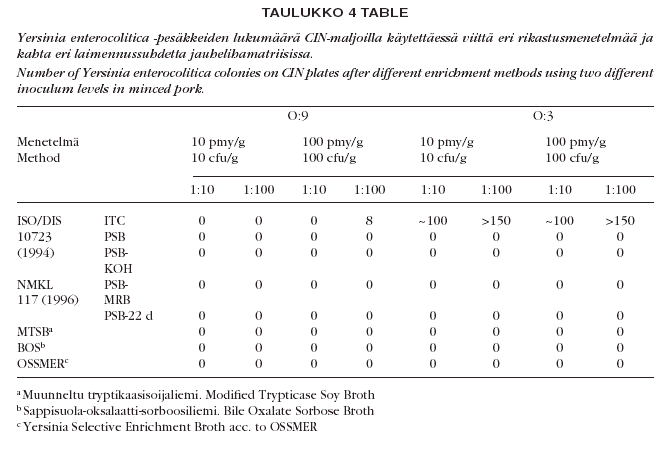
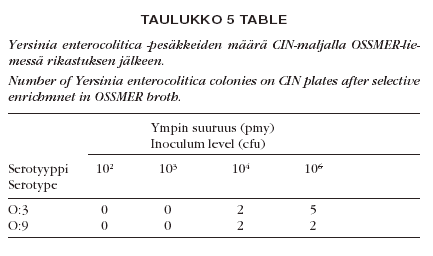
An 18-year-old mare had been variably lame in the right forelimb for almost one year. The local veterinarian had diagnosed a hoof abscess, which had been treated several times without long-term success. On admission, a rounded lesion was present in the white line and sole of the lateral aspect of the hoof. Reddish tissue protruded from the sole. The hoof was warm and digital pulse was elevated. The horse was lame at walking an incline of 3/5°. No other abnormalities were noted in a routine clinical examination. Radiographs revealed an area of decreased opacity with mottled appearance on the lateral aspect of the hoof, and the adjacent margin of the distal phalanx appeared to be slightly lytic. Histopathological examination confi rmed the diagnosis of squamous cell carcinoma, which is a rare tumour in the foot. An attempt was made to remove the tumour surgically, but complete removal was impossible. The mare recovered well after the operation. However, the symptoms recurred a couple of months later and the mare was euthanized.
